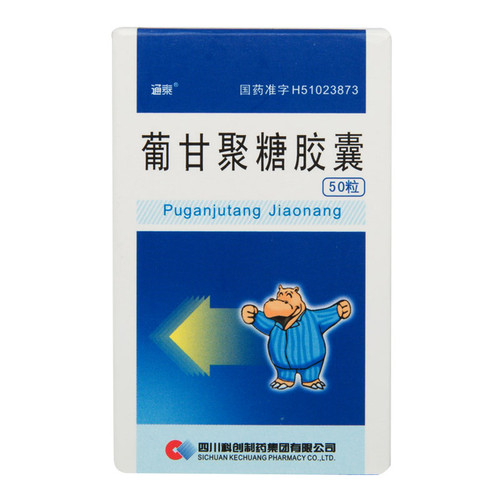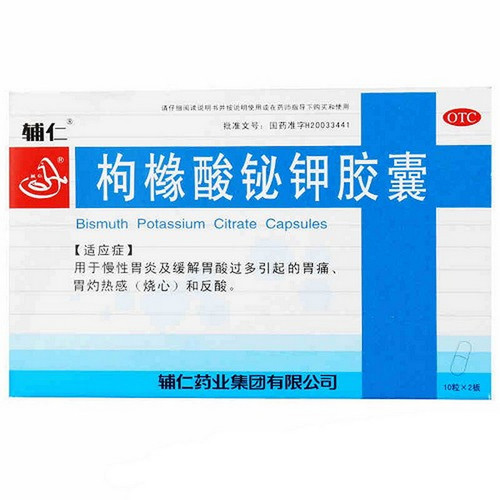Product Overview
[Drug Name]
Generic Name: Gemfibrozil Capsules
Trade Name: Kangpu Gemfibrozil Capsules 0.3g*30s
[Main Ingredients]
The active ingredient of this product is gemfibrozil. Chemical Name: 2,2-Dimethyl-5-(2,5-dimethylphenyloxy)-pentanoic acid. Molecular Formula: C₁₅H₂₂O₃. Molecular Weight: 250.34
[Properties]
This product is a white powder.
[Indications/Main Functions]
For hyperlipidemia. It is indicated for patients with severe type IV or V hyperlipoproteinemia and those at high risk of coronary heart disease who have not responded to diet control, weight loss, or other lipid-regulating medications. It is also indicated for patients with type IIb hyperlipoproteinemia and those at high risk of coronary heart disease who have not responded to diet control, weight loss, or other lipid-regulating medications. Due to the potential carcinogenicity of this product to humans, its use should be strictly limited to its designated indications, and its use should be discontinued promptly if its efficacy is inadequate.
[Precautions]
1. This product may interfere with diagnosis. Hemoglobin, hematocrit, and white blood cell count may decrease. Blood creatine phosphokinase, alkaline phosphatase, aminotransferase, and lactate dehydrogenase may increase. 2. Regular examinations should be conducted during medication. (1) Complete blood picture and platelet count. (2) Liver function test. (3) Blood lipids. (4) Blood creatine phosphokinase. 3. If treatment is ineffective after 3 months, the drug should be discontinued. If clinical cholelithiasis, significant abnormalities in liver function, suspected symptoms of myopathy (such as myalgia, tenderness, fatigue, etc.) or a significant increase in blood creatine phosphokinase occur after medication, the drug should also be discontinued. 4. After discontinuation of this product, blood cholesterol and triglycerides may rebound to exceed the original levels, so it is advisable to give a low-fat diet and monitor blood lipids until they return to normal. 5. While treating hyperlipidemia, it is also necessary to pay attention to and treat various primary diseases that can cause hyperlipidemia, such as hypothyroidism and diabetes. Certain medications can also cause hyperlipidemia, such as estrogens, thiazide diuretics, and beta-blockers. After discontinuation of these medications, corresponding anti-hyperlipidemic treatment is no longer necessary. 6. Dietary therapy is always the primary treatment for hyperlipidemia. Exercise and weight loss, combined with other measures, are superior to any other medication.
[Drug Interactions]
1. This product is contraindicated in patients with hypersensitivity to gemfibrozil. 2. This product is contraindicated in patients with gallbladder disease or cholelithiasis, as it may exacerbate gallbladder disease symptoms. 3. This product is contraindicated in patients with hepatic insufficiency or primary biliary cirrhosis, as it may increase cholesterol excretion and raise already elevated cholesterol levels. 4. This product is contraindicated in patients with severe renal insufficiency, as it may cause rhabdomyolysis and severe hyperkalemia. It is also contraindicated in patients with serum proteinosis caused by nephrotic syndrome, as it increases the risk of myopathy.
[Pediatric Use]
This product has not been adequately studied in children; the risks and benefits must be carefully considered before use.
[Use in Elderly Patients]
Elderly patients with renal impairment should reduce the dosage of this product appropriately.
[Use in Pregnant and Lactating Women]
High doses of this product have been associated with fetal mortality in animals. Human studies have not been reported, and it is unknown whether this product enters breast milk. Therefore, pregnant and lactating women should not take this product.
[Specifications]
0.3g*30s
[Dosage and Administration]
Usual adult oral dose: 0.3-0.6g twice daily, 30 minutes before breakfast and dinner.
[Adverse Reactions]
1. The most common adverse reactions are gastrointestinal discomfort, such as indigestion, anorexia, nausea, vomiting, fullness, and stomach discomfort. Other less common adverse reactions include headache, dizziness, fatigue, rash, itching, and impotence. 2. Occasionally, cholelithiasis or myositis (myalgia and fatigue) may occur. This product is a clofibric acid derivative and may cause myositis, myopathy, and rhabdomyolysis, leading to elevated blood creatine phosphokinase. Rhabdomyolysis may occur, primarily manifesting as myalgia accompanied by elevated creatine phosphokinase and myoglobinuria, and may lead to renal failure, but this is rare. The risk of myopathy is increased in patients with nephrotic syndrome or other renal impairment leading to hypoalbuminemia, or in those with hyperthyroidism. 3. Liver function test abnormalities (elevated serum aminotransferases, lactate dehydrogenase, bilirubin, and alkaline phosphatase) may occur occasionally, but return to normal after discontinuation of the drug. 4. Mild anemia and decreased white blood cell count may occur occasionally, but these symptoms can be stabilized with long-term use. In some cases, severe anemia, leukopenia, thrombocytopenia, and bone marrow suppression may occur.
[Contraindications]
1. Gemfibrozil is contraindicated in patients with allergies. 2. Gemfibrozil is contraindicated in patients with gallbladder disease or cholelithiasis, as this product may exacerbate gallbladder disease symptoms. 3. Gemfibrozil is contraindicated in patients with hepatic insufficiency or primary biliary cirrhosis, as this product may increase cholesterol excretion, raising already elevated cholesterol levels. 4. This drug is contraindicated in patients with severe renal insufficiency, as it may cause rhabdomyolysis and severe hyperkalemia. It is also contraindicated in patients with nephrotic syndrome due to decreased serum protein, as it increases the risk of myopathy.
[Overdose]
There have been no reports of overdose with this drug. If an overdose occurs, appropriate supportive care should be implemented for symptoms of toxicity.
[Pharmacology and Toxicology]
This drug is a clofibric acid derivative, a lipid-regulating drug. Its lipid-lowering mechanism of action is not fully understood, but it may involve peripheral lipolysis, reduced hepatic uptake of free fatty acids, thereby reducing hepatic triglyceride formation, and inhibition of very-low-density lipoprotein (VLDL) apolipoprotein synthesis, thereby reducing VLDL production. This drug lowers blood triglycerides and increases high-density lipoprotein (HDL) levels. Although it can slightly reduce low-density lipoprotein cholesterol levels, it may increase LDL levels in type IV hyperlipoproteinemia. A five-year placebo-controlled study showed that this drug can reduce the incidence of sudden death and myocardial infarction in severe coronary artery disease. Long-term administration of 10 times the human dose to rats increased the incidence of malignant liver tumors and benign testicular tumors.
[Pharmacokinetics]
According to literature reports, this drug is completely absorbed from the gastrointestinal tract, with peak plasma concentration occurring 1-2 hours after oral administration; T1/2 is 1.5 hours, and plasma protein binding is approximately 98%. The lipid-lowering effect begins 2-5 days after treatment, with peak effect occurring in the fourth week. Approximately 70% of the drug is excreted via the kidneys, primarily unchanged, and 6% is excreted in the feces.










